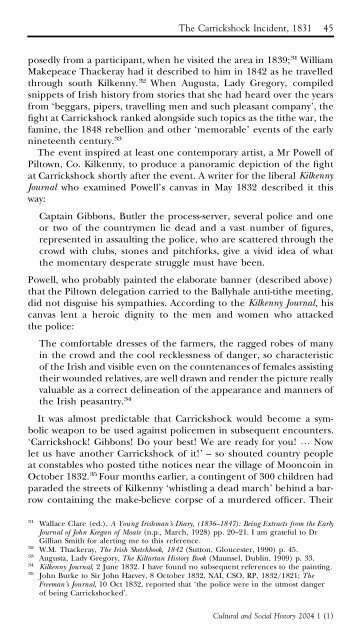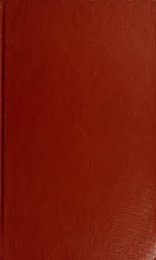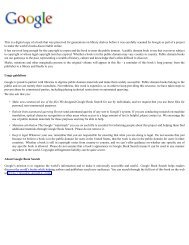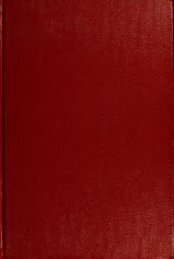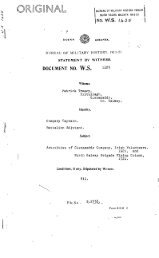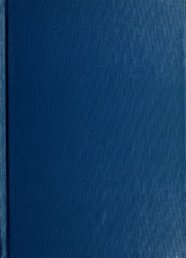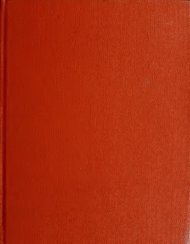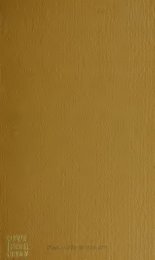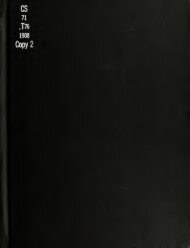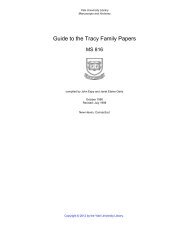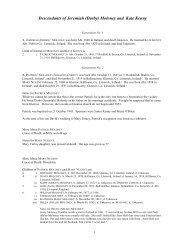The Carrickshock Incident, 1831: Social Memory and an Irish cause ...
The Carrickshock Incident, 1831: Social Memory and an Irish cause ...
The Carrickshock Incident, 1831: Social Memory and an Irish cause ...
You also want an ePaper? Increase the reach of your titles
YUMPU automatically turns print PDFs into web optimized ePapers that Google loves.
<strong>The</strong> <strong>Carrickshock</strong> <strong>Incident</strong>, <strong>1831</strong> 45<br />
posedly from a particip<strong>an</strong>t, when he visited the area in 1839; 31 William<br />
Makepeace Thackeray had it described to him in 1842 as he travelled<br />
through south Kilkenny. 32 When Augusta, Lady Gregory, compiled<br />
snippets of <strong>Irish</strong> history from stories that she had heard over the years<br />
from ‘beggars, pipers, travelling men <strong><strong>an</strong>d</strong> such pleas<strong>an</strong>t comp<strong>an</strong>y’, the<br />
ght at <strong>Carrickshock</strong> r<strong>an</strong>ked alongside such topics as the tithe war, the<br />
famine, the 1848 rebellion <strong><strong>an</strong>d</strong> other ‘memorable’ events of the early<br />
nineteenth century. 33<br />
<strong>The</strong> event inspired at least one contemporary artist, a Mr Powell of<br />
Piltown, Co. Kilkenny, to produce a p<strong>an</strong>oramic depiction of the ght<br />
at <strong>Carrickshock</strong> shortly after the event. A writer for the liberal Kilkenny<br />
Journal who examined Powell’s c<strong>an</strong>vas in May 1832 described it this<br />
way:<br />
Captain Gibbons, Butler the process-server, several police <strong><strong>an</strong>d</strong> one<br />
or two of the countrymen lie dead <strong><strong>an</strong>d</strong> a vast number of gures,<br />
represented in assaulting the police, who are scattered through the<br />
crowd with clubs, stones <strong><strong>an</strong>d</strong> pitchforks, give a vivid idea of what<br />
the momentary desperate struggle must have been.<br />
Powell, who probably painted the elaborate b<strong>an</strong>ner (described above)<br />
that the Piltown delegation carried to the Ballyhale <strong>an</strong>ti-tithe meeting,<br />
did not disguise his sympathies. According to the Kilkenny Journal, his<br />
c<strong>an</strong>vas lent a heroic dignity to the men <strong><strong>an</strong>d</strong> women who attacked<br />
the police:<br />
<strong>The</strong> comfortable dresses of the farmers, the ragged robes of m<strong>an</strong>y<br />
in the crowd <strong><strong>an</strong>d</strong> the cool recklessness of d<strong>an</strong>ger, so characteristic<br />
of the <strong>Irish</strong> <strong><strong>an</strong>d</strong> visible even on the counten<strong>an</strong>ces of females assisting<br />
their wounded relatives, are well drawn <strong><strong>an</strong>d</strong> render the picture really<br />
valuable as a correct delineation of the appear<strong>an</strong>ce <strong><strong>an</strong>d</strong> m<strong>an</strong>ners of<br />
the <strong>Irish</strong> peas<strong>an</strong>try. 34<br />
It was almost predictable that <strong>Carrickshock</strong> would become a symbolic<br />
weapon to be used against policemen in subsequent encounters.<br />
‘<strong>Carrickshock</strong>! Gibbons! Do your best! We are ready for you! % Now<br />
let us have <strong>an</strong>other <strong>Carrickshock</strong> of it!’ – so shouted country people<br />
at constables who posted tithe notices near the village of Mooncoin in<br />
October 1832. 35 Four months earlier, a contingent of 300 children had<br />
paraded the streets of Kilkenny ‘whistling a dead march’ behind a barrow<br />
containing the make-believe corpse of a murdered of cer. <strong>The</strong>ir<br />
31 Wallace Clare (ed.), A Young <strong>Irish</strong>m<strong>an</strong>’s Diary, (1836–1847): Being Extracts from the Early<br />
Journal of John Keeg<strong>an</strong> of Moate (n.p., March, 1928) pp. 20–21. I am grateful to Dr<br />
Gilli<strong>an</strong> Smith for alerting me to this reference.<br />
32 W.M. Thackeray, <strong>The</strong> <strong>Irish</strong> Sketchbook, 1842 (Sutton, Gloucester, 1990) p. 45.<br />
33 Augusta, Lady Gregory, <strong>The</strong> Kiltart<strong>an</strong> History Book (Maunsel, Dublin, 1909) p. 33.<br />
34 Kilkenny Journal, 2 June 1832. I have found no subsequent references to the painting.<br />
35 John Burke to Sir John Harvey, 8 October 1832, NAI, CSO, RP, 1832/1821; <strong>The</strong><br />
Freem<strong>an</strong>’s Journal, 10 Oct 1832, reported that ‘the police were in the utmost d<strong>an</strong>ger<br />
of being <strong>Carrickshock</strong>ed’.<br />
Cultural <strong><strong>an</strong>d</strong> <strong>Social</strong> History 2004 1 (1)


